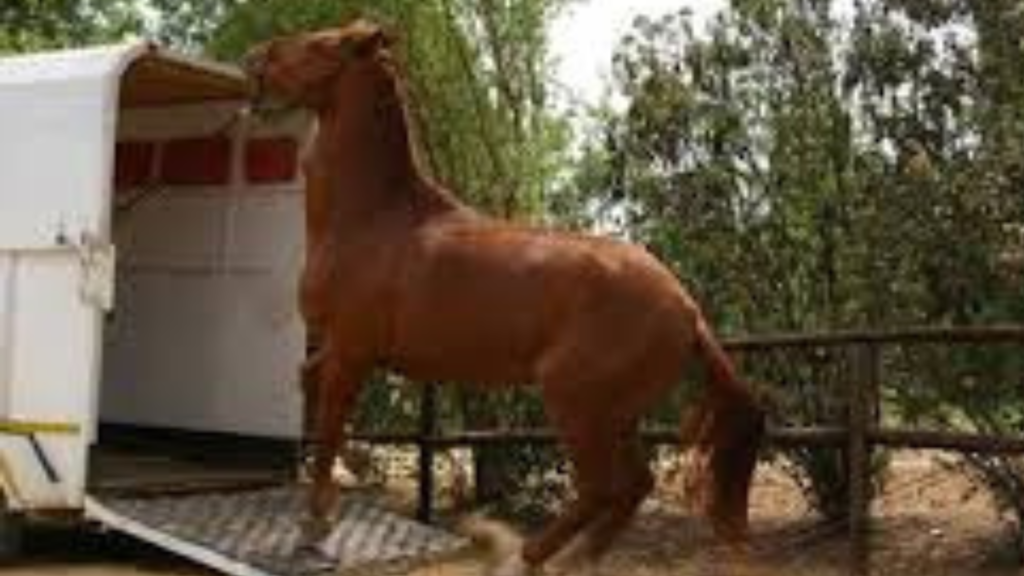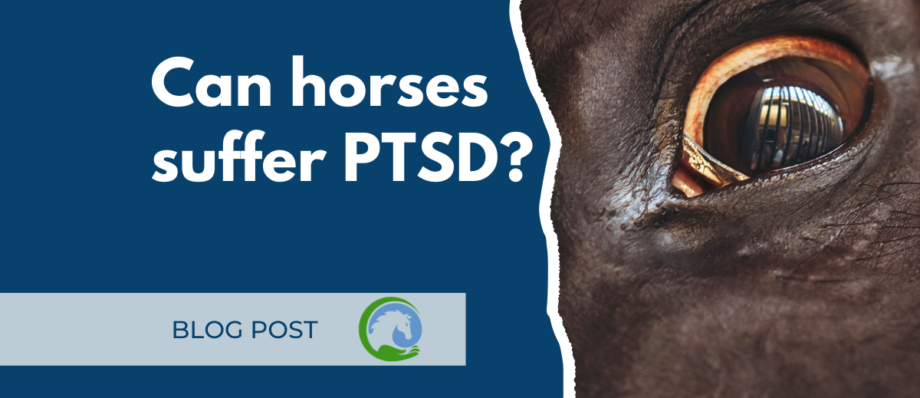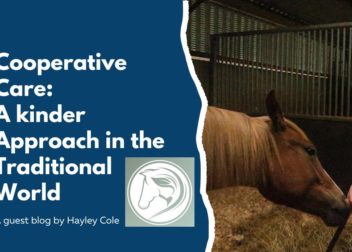Can horses suffer PTSD?
What is PTSD?
Post-traumatic stress disorder (PTSD) is an anxiety disorder caused by very stressful, frightening or distressing events.
Symptoms
Human symptoms of PTSD can vary over time and vary from person to person. Human PTSD symptoms can be grouped into four types: intrusive memories, avoidance, negative changes in thinking and mood, and changes in physical and emotional reactions.
Intrusive memories
Symptoms of intrusive memories:
- Recurrent, unwanted distressing memories of the traumatic event
- Severe emotional distress or physical reactions to something that reminds you of the traumatic event
- Reliving the traumatic event as if it were happening again (flashbacks)
- Upsetting dreams or nightmares about the traumatic event
Avoidance
Symptoms of avoidance:
- Trying to avoid thinking or talking about the traumatic event
- Avoiding places, activities or people that remind you of the traumatic event
- Negative changes in thinking and mood
Changes in thinking and mood:
Symptoms of negative changes in thinking and mood:
- Hopelessness about the future
- Difficulty experiencing positive emotions
- Feeling emotionally numb
- Changes in physical and emotional reactions
- Memory problems, including not remembering important aspects of the traumatic event
- Difficulty maintaining close relationships
- Feeling detached from family and friends
- Negative thoughts about yourself, other people or the world
- Lack of interest in activities you once enjoyed
changes in physical and emotional reactions:
Symptoms of changes in physical and emotional reactions (also called arousal symptoms) may include:
- Being easily startled or frightened
- Always being on guard for danger
- Self-destructive behavior, such as drinking too much or driving too fast
- Trouble sleeping
- Trouble concentrating
- Irritability, angry outbursts or aggressive behavior
- Overwhelming guilt or shame
Someone suffering with PTDS usually slides quite easily into the traditional fight-or-flight modes, and anyone who has a traumatic experience can suffer from PTSD.
Can horses suffer PTSD?
Some of you might be asking- isn’t PTSD associated mostly with war veterans and human abuse victims? Yes it is, but many scientists believe animals can suffer from this condition as well.
“There is never a physical trauma without an associated psychological trauma,” says Professor Gordon Tumball, who has studied PTSD at length. “Trauma is something experienced by everyone — including animals — and anyone who has worked with abused horses will very quickly tell you that these animals can be unpredictable, aggressive, moody, or depressive, and all these symptoms correlates to PTSD.”
Horses (and people) can be traumatized by almost anything: a bad fall, bad riders, riding crops, or even a feed bowl. The problem is we often translate their fears and insecurities into “he’s being naughty” or “he’s just being stubborn” or even “spoiled,” which isn’t exactly always the case.
Some horses are more prone to these types of issues, and by forcing them into that little box you want them to fit into, they react the only way they know how: fight or flight. Instead you should use the fear to identify the problem, be mindful of it, and work toward overcoming it. Keep in mind that trauma can be a slow thing to manifest it doesn’t have to be overnight.
An example of PTSD in horses

A horse that had been well trained to load and travel in the horse box experiences trauma whilst on a journey one day. It doesn’t have to be a nasty road accident, it could be something as simple as going through a dark noisy tunnel that frightened him or a low branch hitting the trailer. If it was enough to frighten the horse then there is a chance he may develop PTSD. We might know that going through a tunnel is perfectly safe but something like that might be terrifying for the horse.
As a result, the horse develops some symptoms of PTSD
- Severe emotional distress or physical reactions to something that reminds you of the traumatic event – The horse panics at the sight of the horse box.
- Avoiding places, activities or people that remind you of the traumatic event – Refusal to load
- Changes in physical and emotional reactions – He becomes aggressive when asked to load
- Difficulty maintaining close relationships – Although the handler didn’t cause the trauma she is now trying to false the horse into a place he no longer feels safe. This will have an impact on trust.
- Always being on guard for danger – You will often see horse release their bowls and begin to get agitated at the first sign of impending traveling.
Some owners may be unaware that something scared the horse. Other times it can be obvious, for example a crash or serious injury. But often the horse is labelled as naughty and the issues not addressed with understanding and compassion.
The problems for the horse can get even worse when he is sold. The new owner unaware that the horse may be suffering PTSD and brands the horse ‘naughty’. All kinds of scare tactics and pressure are put on the horse to get him to load until eventually he is so traumatised by these new tactics he loads into the box. This battle will happen time and time again because the route cause had not been addressed and time has not been taken to allow the horse to overcome his fear.
How can you help a horse with PTSD?
Identifying PTSD in a horse is the first step. Sure signs are sudden mood swings, shutting down, depressive moods, dissociation, poor immune systems, digestion problems (such as colic), and of course, aggression. These symptoms may vary in severity, consistency, and predictability, which makes a horse with PTSD quite dangerous.
In an article about PTSD in horses, Kerry T. Thomas writes: “To therapy the issues, each issue or perceived association has to be addressed. We need the trigger to facilitate transition.
War veterans are told to get exercise, go outside, reconnect with people, and take the time to get used to uncomfortable emotions. Horses get a lot of exercise and they live outside, but how do you explain emotions to a horse? You need to trigger those emotions in a safe environment.
For the horse that now refuses to travel this means exposure to the horsebox in a controlled manner with no pressure. Its no good trying to overcome his fear an hour before you are meant to arrive at a show. The horse needs time dedicated to rehabilitation for as long as that rehabilitation takes.
The rehabilitation process for a horse who is experiencing such trauma may look like this
- Horse sees trailer from a distance, and nothing is expected or asked of him. It may be that he has to walk past it to get to his field or its parked somewhere in sight.
- As the horse becomes used to seeing the trailer, he is lead closer to it walked passed it and around it. Positive reinforcement can be used here.
- The same is repeated with the trailer ramp down.
- He is then asked to walk over the ramp or put a foot on. Perhaps rewarded with food.
- As he becomes comfortable with the trailer and ramp he is asked to walk further into the trailer. Again rewarded with positive reinforcement.
- Eventually when he is comfortable with talking on and off the trailer the ramp can be closed. Initially the ramp is immediately opened again and the time increased slowly.
- Then the engine can be turned on.
- Once the horse is loading well and happy with the ramps being closed and the engine running its time for a little trip to nowhere. A short drive down the road and back.
- This is repeated and distance driven increased.
The key here is time. This process can take some horses a week or so and others it may take months or years. Every step needs to be broken down, consistent and positively rewarded. If the horse become fearful at any point you may have to go back a step or two.
Sadly too often in the horse world we see impatient owners not willing to put the time into such rehabilitation and instead choosing to repeatedly scare or beat the horse into doing what they want it to, usually to get to a show on time!
The main thing you need to remember is that this is a slow process. It can take a lifetime for a horse to recover from a trauma, and sometimes it doesn’t even work. The study of PTSD in horses is relatively new, and more data is needed to truly help horses with these conditions. But as an owner, it is your responsibility to not only take this into account, but to identify the problem, be mindful of what you ask of the horse and its history and help these horses get through it as best you can.



